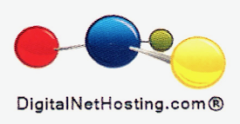Sap Business One Reseller News: Crystal Reports
If you have SAP B1 ERP implemented in your organization, you are probably already familiar with internal reports, queries, XL Reporter and in this small publication we would like to give highlights on Crystal Reports. Each reporting tool has its own pluses and drawbacks, and you should try multiple tools, if your reporting needs are broad: from Financial reporting (Trial Balance, Balance Sheet, Profit and Loss, Cash Flow Statement) to Operation reporting (Sales by Regions and Items, Sales Commission Report, Project Profitability to name a few examples), plus if you need industry forms, such as Bill of Ladings, Agent Settlement Report:
1. XL Reporter. This reporting tool is very end user friendly and if you are accountant, who is neither comfortable nor familiar with SQL scripting, this report should fit your needs. This report is deploys Microsoft Excel tools and it has VBA extension to MS Excel. However this reports design tool works with predefined SB1 objects: Business Partner, Account, Item, Price List and similar, and you are limited in building custom links. And this is understandable – if you need advanced links in your report, you will need SQL view or Stored procedure as the report base – you can achieve this goal in Crystal Report
2. Crystal Reports. If you are discovering Crystal Reports design through report building wizard, then you should listen SAP BO training class either online or face-to-face. However if you are report developer and work in IT department, then you should go to SQL view or stored procedure scripting. Stored procedure is the most powerful tool and its parameters should be translated to Crystal Report parameter. Stored Procedure allows you to build temporary tables within its boundaries – this should resolve complex unionizing and build staging tables if required. Stored procedure should be able to build very complex report – try to design something like Sales project profitability, based on incurred cost in Purchase Order Processing, Production (working hours and possible overhead)
3. SQL Server Reporting Services or SRS. This tool is web based, which should give you certain advantages if your organization has regional offices and international presence. SRS in its suitability is pretty similar to Crystal Reports and it bases its reports on SQL Views or SQL Stored Procedures
4. Industry Forms. If you are thinking which reporting tool to deploy and how, the hint is simple – these reports should depict only one document: Sales Invoice, Purchase Order, Vendor Invoice in the format, required by your industry regulation. You can use Crystal Report (which could be integrated in your SAP B1 interface) as well as SRS (if you want to enable these reporting over the web)
Source by Andrew Karasev

